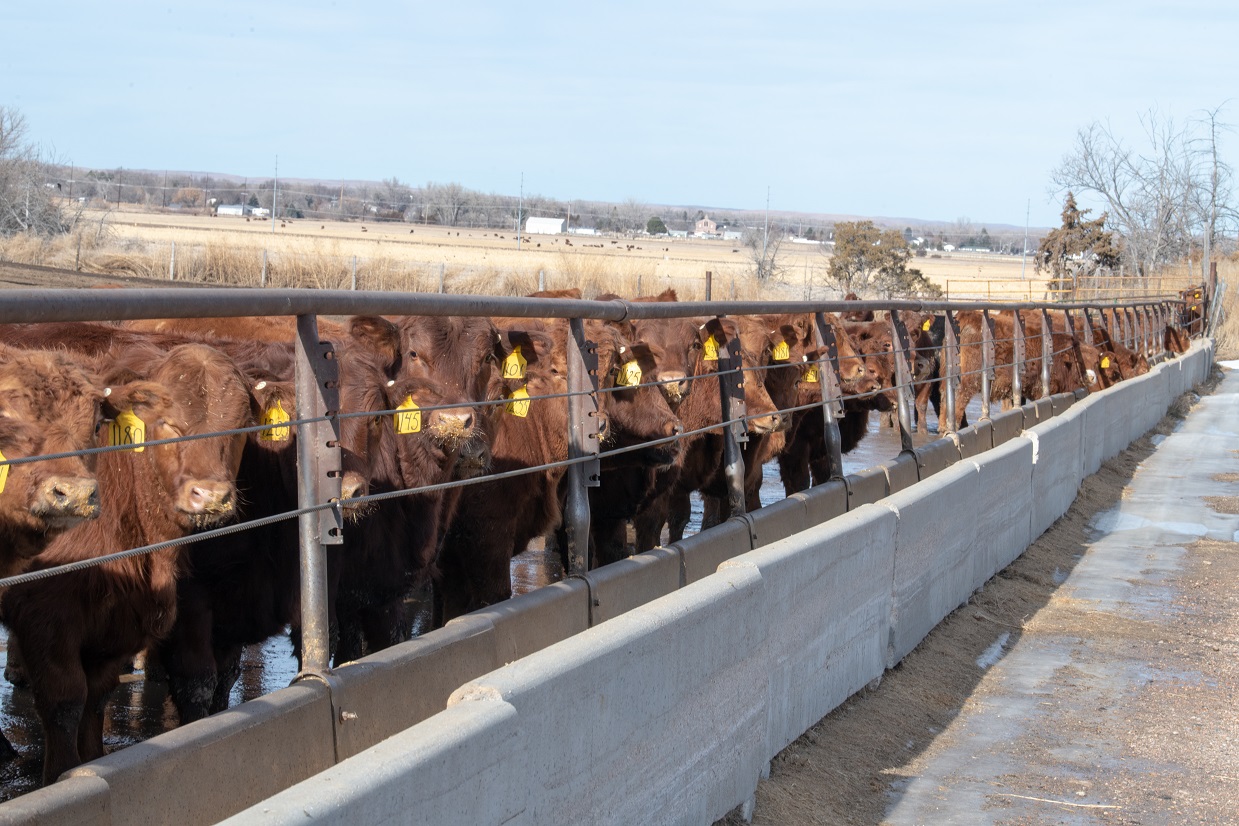Protein Supplementation in Corn Silage-Based Diets – A Review

Listen to a discussion of the content in this article on this episode of the BeefWatch podcast. You can subscribe to new episodes in iTunes or paste http://feeds.feedburner.com/unlbeefwatch into your podcast app.
This article is a summary of the 2022 Nebraska Beef Cattle Report, Impact of Urea on Corn Silage Growing Cattle Diets.
With current feed prices and the majority of the state experiencing dry conditions, producers may be evaluating alternative feed options for this year. Understanding differences in protein content and degradability of various feeds is important when determining the most cost-effective option while meeting cattle nutrient requirements.
Protein Types
The crude protein (CP) value of a feed is actually an estimate of protein that is based on the nitrogen content and can be further classified into two forms of protein: rumen degradable protein (RDP) and rumen undegradable protein (RUP). RDP is degraded in the rumen and utilized by the microbes to make their own protein. The rumen microbes require RDP as well as a readily available energy source for microbial growth and function. RUP escapes rumen degradation and is digested in the small intestine. Soybean meal, alfalfa, and urea are good sources of RDP while distillers grains and corn gluten meal are good sources of RUP.
When microbes in the rumen complete their life cycle, they pass on to the lower digestive tract to be used by the animal as microbial crude protein (MCP). The true protein that is absorbed in the small intestine as a combination of MCP and RUP is referred to as metabolizable protein (MP). The ruminant animal uses MP for maintenance and growth, so MP requirements of cattle vary depending on stage of production. For example, young growing cattle have higher MP requirements than mature cattle. Additionally, supplementation needs will vary depending on the protein composition of the base diet. Lactating cows or growing cattle on forage-based diets often require RUP supplementation to meet MP requirements as forages are normally very high in RDP (as a percent of their protein) and the digestion of the RUP in forages are normally quite low.
Protein Composition of Corn Silage
Corn silage is often included in growing cattle diets and may be a feedstuff of increased interest in cow diets this year. The CP content of corn silage is relatively low (6.5 to 8.5%) and is primarily in the form of RDP. Additionally, previous research suggests only 50% of the RUP in corn silage is digestible.
Recent research at the University of Nebraska-Lincoln has shown that the RUP content of corn silage decreases as ensiling times increases. In a recent study, RUP content of corn silage decreased from 32% of CP at harvest time to 17% after 160 days of ensiling, with the greatest reduction occurring within the first 32 days. By analyzing the grain and forage components of the silage separately, it was determined that the majority of change in RUP content occurred in the corn grain with little change in the forage portion over time. Overall, the average RUP content of corn silage was estimated to be 16% of CP, which is lower than the RUP value often reported by other references (25% of CP as RUP). Overestimating this value can impact diet formulation in corn silage-based diets and result in reduced performance. Between the overall low CP content of corn silage, low digestible RUP, and low RDP relative to fermentable energy, supplementation of both RDP and RUP may be beneficial in corn silage-based diets for the animal to utilize the feed most effectively. For producers, this means adding 15 to 25% of the diet as distillers grains is very beneficial to gain and feed conversion on silage growing diets. If feeding silage to cows, protein supplementation is beneficial but you may need to consider adding lower quality forages or limit-feeding so cows don’t get too high of body condition or too much energy from the diet.
Summary
When comparing feed options, it is important to appropriately match the type of protein with the protein needs of the cattle. In light of current feed prices and dry conditions potentially limiting forage availability this year, strategic supplementation of both RDP and RUP in all diets bu especially corn silage-based diets may be a competitive option if you have the silage in storage now. For assistance with ration formulation, contact your local Beef Extension Educator.
Interviews with the authors of BeefWatch newsletter articles become available throughout the month of publication and are accessible at https://go.unl.edu/podcast.
